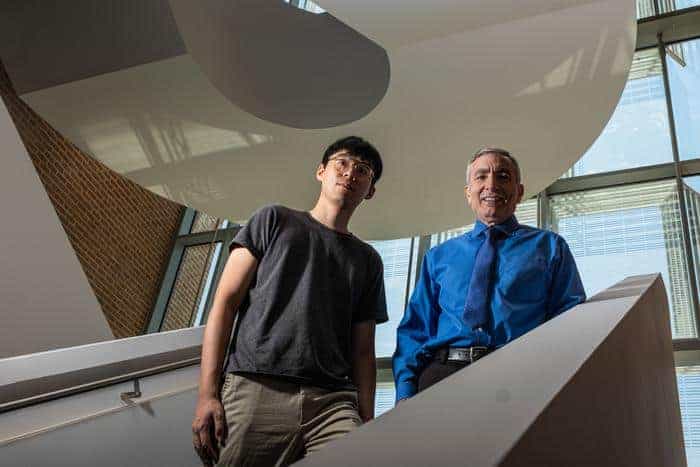
A cost-effective new way of recovering metals directly from lithium-ion battery waste could significantly reduce the environmental impact of these ubiquitous devices while cutting the time required to recycle them almost 100-fold. Developed by scientists at Rice University in the US, the technique is known as flash Joule heating, and it has already been used to recover valuable metals from other forms of electronic waste without toxic solvents and with less energy than current laboratory methods.
“Currently, 95% of batteries are not recycled because we don’t have the capacity to recycle them, even as waste from electronics is increasing at an annual rate of 9%,” says James Tour, the Rice nanoscientist who led the project. The recent popularity of electric cars adds urgency to the problem, he adds: “Batteries in electric vehicles last about 10 years, and many of those are coming due now, because it’s been about 10 years that we’ve been using them.”
Spent batteries that are not recycled mostly end up in landfill, as do many other forms of electronic waste (e-waste). This is bad for the environment, as e-waste often contains heavy metals, including some that are toxic. It is also a missed commercial opportunity, since e-waste could in principle be an important and sustainable source of precious metals such as rhodium, palladium, silver, and gold as well as less costly elements like chromium, cadmium, lead and mercury.
The problem is that e-waste recycling methods are far from perfect. The most common ones are based on pyrometallurgy, which involves creating a molten soup of metals at high temperatures. These methods lack selectivity, are energy intensive and produce hazardous, heavy-metal-bearing fumes, especially when the waste contains metals with relatively low melting points such as mercury, cadmium or lead.
Other techniques use hydrometallurgy, which involves leaching metals out of e-waste using acids, bases or cyanide. While these methods are more selective, they produce large quantities of liquid or sludgy waste and involve chemical reactions that are kinetically slow and thus hard to scale up. “A lot of current battery recycling processes involve the use of very strong acids, and these tend to be messy, cumbersome processes,” Tour observes.
A further alternative, biometallurgy, separates metals by harnessing natural biological processes in microorganisms, but this promising family of techniques is still in its infancy.
Gone in a flash
In 2020, Tour and his colleagues at Rice developed a way of producing graphene from carbon sources like waste food and plastic. Later, they adapted this flash Joule heating method to recover precious metals from e-waste and remove toxic ones from the remaining material.
The technique works because the vapour pressures of metals in e-waste are very different from those of other waste components such as carbon, ceramics and glass. In a process known as evaporative separation, the researchers vaporize these metals in a flash chamber by applying an intense pulse of current lasting less than 1 second, heating the waste to 3400 K.
The vapours are then transported under vacuum from the flash chamber to a cold trap where they condense into their constituent elements, explains team member Bing Deng. The metal mixture in the trap can then be further purified using established refining methods.
Activating the black mass
In their latest study, Tour and colleagues extended this process to the so-called black mass, which is the combined waste that comes from the cathode and anode in lithium-ion batteries. Using the Joule-heating approach, the team heated the black mass to temperatures above 2100 K within a few seconds. This ultrafast high-temperature treatment removes the inert layer on the battery metals while also lowering the oxidation state of the black mass, allowing it to be dissolved in a dilute acid.
“What we found is that if you ‘flash’ the black mass, then you can easily separate out the critical metals using only low-concentration hydrochloric acid,” Tour explains. “You could say the flash liberates the metals, so they dissolve easier. We’re still using acid, but much less.”
Using this method, the team recovered more than 98% of the metal from various types of mixed battery waste. What is more, dissolving the waste takes less than 20 minutes, as opposed to 24 hours using traditional methods.
“Industry traditionally tries to recycle the black mass, but current recycling strategies are limited by the complex treatment procedures as well as the substantial energy consumption and CO2 emissions,” says team member Weiyin Chen. “The most important result of our process is reducing the acid usage by 10 times and the time consumption by 100 times during the recycling.”
The Rice researchers say they are now looking to scale up their recycling technique. “We have already demonstrated kilogram-level recovery in our lab and the flash-Joule process can presumably be integrated into a continuous system in the future,” Chen tells Physics World.
























